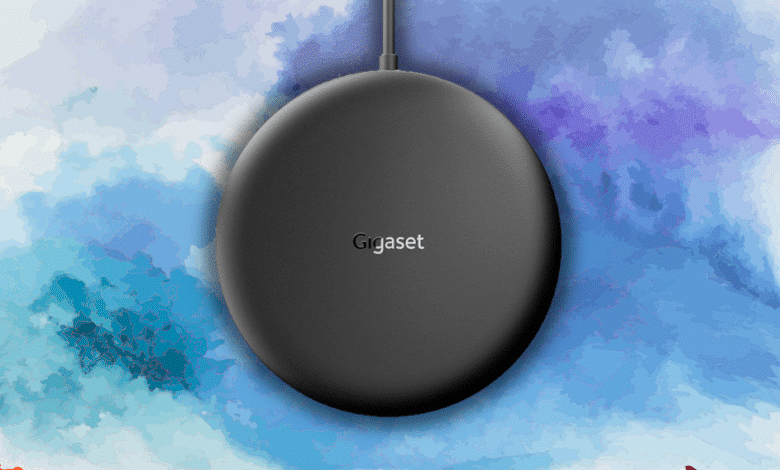
The German company Gigaset offers several smartphones that stand out from the competition with some special features. One of them is the focus on wireless charging: All of the company’s devices can be charged with a charging pad. Therefore, it is hardly surprising that Gigaset offers one as an optional accessory: The Gigaset Wireless Fast Charger 2.0. Among other things, this is advertised with up to 15 watts of charging power, some protection circuits and a foreign object detection and is offered for a price of currently € 39.99 * [test time: €40]. Whether the Wireless Fast Charger 2.0 is worth this, and whether we would recommend the wireless charging pad, we clarify in the following test.
Technical data (manufacturer specifications)
| Dimensions: | 100 x 14 x 100 mm (W x H x D) |
| Weight: | 122 g |
| Connection: | USB-C |
| Input power: | 5V/3A, 9V/2A, 12V/1.5A |
| Output power: | Maximum 15 W |
| Standby consumption: | < 0.3 W |
| Frequency: | 10 – 205 kHz |
| Efficiency: | 70% at 5 watts, 80% at 10 / 15 watts |
| Protective circuits: | OCP, OTP, OVP, UVP |
| Price: | € 39.99 * [Test time: 40 €] |

Scope of delivery of the Wireless Fast Charger 2.0
When it comes to the scope of delivery, Gigaset limits itself to the usual. The Wireless Fast Charger 2.0 is packaged in the orange and white colors typical for the manufacturer. Opening the box reveals the charging pad, a manual and the almost one meter long connection cable. There are no other accessories, but that should hardly be necessary for the charging pad’s operation.
Design and workmanship
Gigaset’s Wireless Fast Charger 2.0 is kept very simple: In operation, only the circular plastic surface with the visually highlighted manufacturer logo can be seen from above. The connection is hidden from below: The charging pad is supplied via a USB-C port that is embedded so deep in the casing that only the cable is visible from the outside. The rubberized stand and the numerous vents that allow the electronics to cool down are also on the bottom. Finally, the status LED, which the charging pad uses to illuminate the surface, is also located there. This signals the user whether a device is currently being charged or whether there is a problem.
In terms of feel and build quality, there is nothing to complain about with the wireless charging pad. The plastic surface used by Gigaset in combination with the rounded case shape is pleasant to hold and the construction is very stable. Furthermore, the case does not yield under pressure, the case transitions are clean and there are no sharp corners or edges. Gigaset has done a good job here. It is only a pity that the production is apparently not done in Germany: Unlike Gigaset’s current smartphones, the charging pad is manufactured in China.
Practice
Charging with the Wireless Fast Charger 2.0 is as simple as you would probably expect. The charging pad is simply connected via USB-C and can then be used. To charge a compatible device, simply place it on the surface, then the green LED on the bottom flashes to signal charging. Alternatively, the device can glow red if an incompatible smartphone or a foreign object is placed on it.
For our test measurement, we supplied the charging pad with a 15 W USB power adapter and charged the Gigaset GX4 several times this way. A charge from 20 to 90 percent battery level was possible in just over two hours. In return, 70 percent was reached after one and a half hours, and the smartphone reached 50 percent after 50 minutes. We did not notice any noticeable performance drops – the charging pad did its job without problems and pauses. Furthermore, no coil whining or rattling was audible during operation.
On the other hand, a clear warming can be noticed during a longer charging process, but this can also be found in other charging pads. At the end of the described charging cycle, we could measure a difference of 18 °C on the surface compared to the ambient temperature. The temperatures reached should hardly become critical even in midsummer, as long as the pad is not placed directly in the sun.
Using the Gigaset Wireless Fast Charger 2.0 in combination with a protective cover is also no problem – we could even charge it with a flip cover. Smartphones from other manufacturers are also supported, provided they support the Qi standard. Detection takes place without any significant reaction time: The charging process starts as soon as the smartphone is put on the charger. We measured a consumption of around 0.1 watts in idle with a simple USB tester. The measurement accuracy might leave something to be desired in such a low consumption range, but even with some deviation from the measured value, the idle power consumption of the charging pad would not play a significant role.
Conclusion on the Wireless Fast Charger 2.0
Gigaset currently charges € 39.99 * [review time: 40 euros] for the Wireless Fast Charger 2.0 and offers a wireless charging pad for this price that is all-around successful on the technical side. The pad recognizes smartphones without significant delays and charges them without noticeable performance drops or other conspicuities. We did not hear any coil whining, the function-related heating is within limits and the idle consumption is harmlessly low. The charging pad also convinces in terms of build quality and feel.
However, Gigaset’s Wireless Fast Charger 2.0 has one problem: Compared with common offers, for example on Amazon, the RRP is comparatively high. Thus, the price-performance ratio hampers the rating for the time being. On the other hand, the charging pad has not been on the market for too long, so it might come closer to the competition in some time. In this case, we could recommend the device without hesitation.
Gigaset Wireless Fast Charger 2.0
Workmanship
Performance / Practice
Value for money
85/100
Good wireless charging pad with good implementation but high MSRP.

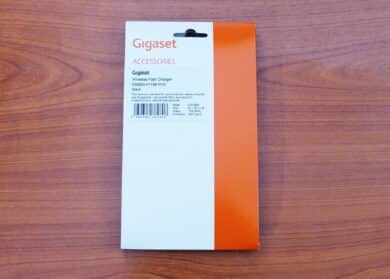
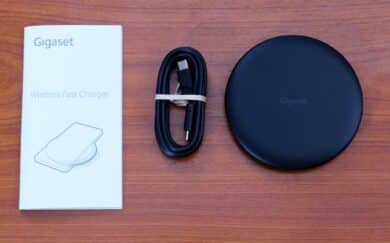
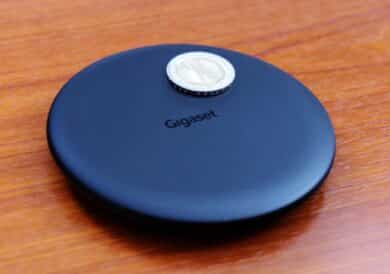
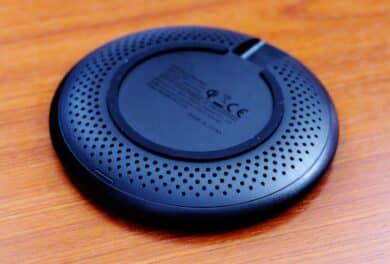
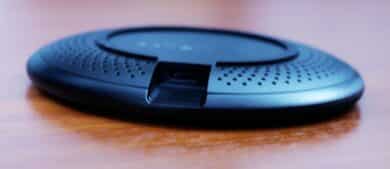
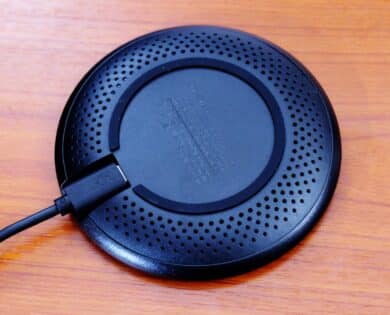
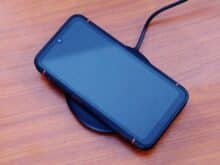
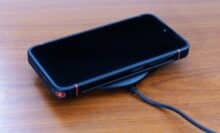
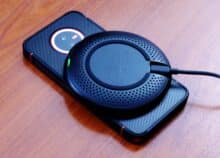
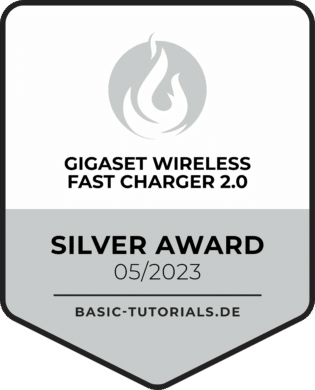
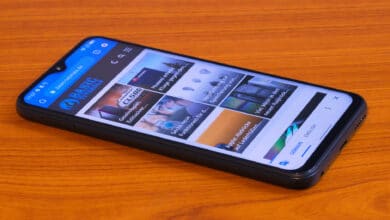
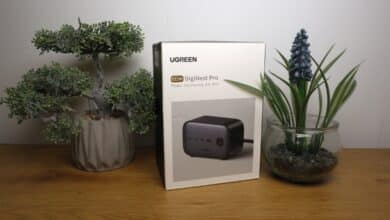
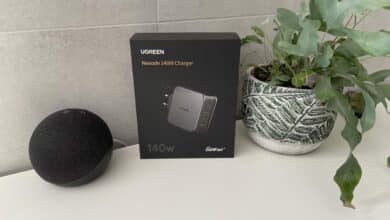
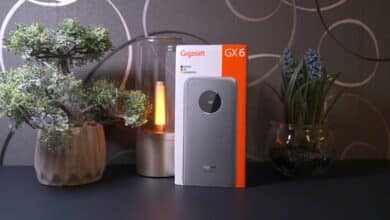
No replies yet
Neue Antworten laden...
Gehört zum Inventar
Beteilige dich an der Diskussion in der Basic Tutorials Community →